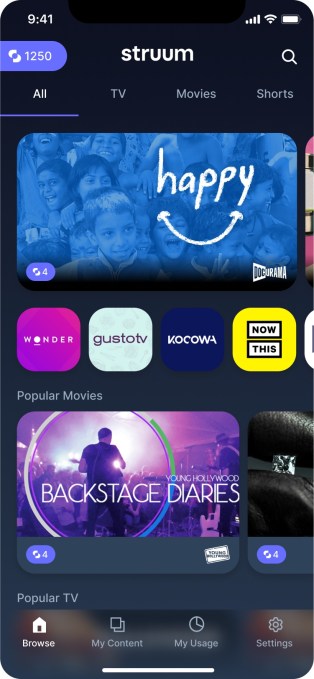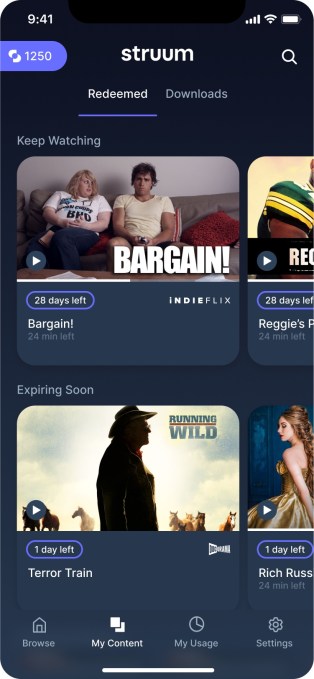Salesforce dominates the world of CRM today, but while it’s a popular and well-used tool for organizing contacts and information, it doesn’t have all the answers when it comes to helping salespeople and marketers sell better, especially when meetings are not in person. Today, one of the startups that has emerged to help fill the gap is announcing a round of growth funding on the back of a huge year for its business.
Qualified — which builds better interactions for B2B sales and marketing teams that already use Salesforce by tapping into extra data sources to develop a better profile of those visiting your website, in aid of improving and personalizing the outreach (hence the name: you’re building “qualified” leads) — has picked up $51 million in funding. The startup will be using the Series B to continue building out its business with more functionality in the platform, and hiring across the board to expand business development and more.
Led by Salesforce Ventures, the funding round also included Norwest Venture Partners and Redpoint Ventures, both previous backers, among others. As with so many rounds at the moment — the venture world is flush with funding at the moment — this one is coming less than a year after Qualified’s last raise. It closed a $12 million Series A in August of last year.
Qualified was co-founded by two Salesforce veterans — ex-Salesforce CMO Kraig Swensrud and ex-SVP of Salesforce.com Sean Whiteley — serial entrepreneurs who you could say have long been hammering away at the challenges of building digital tools for sales and marketing people to do their jobs better online. The pair have founded and sold two other startups filling holes to that end: GetFeedback, acquired by SurveyMonkey, and Kieden, acquired by Salesforce.
The gap that they’re aiming to fill with this latest venture is the fact that when sales and marketing teams want to connect with prospects directly through, say, a phone call, they might have all of that contact’s information at their disposal. But if those teams want to make a more engaged contact when someone is visiting their site — a sign that a person is actually interested and thinking already about engaging with a company — usually the sales and marketing teams are in the dark about who those visitors are.
“We founded Qualified on the premise that a website should be more than a marketing brochure, but not just a sales site,” Swensrud, who is the CEO, said in an interview.
Qualified has built a tool that essentially takes several signals from Salesforce as well as other places to build up some information about the site visitor. It then uses it to give the sales and marketing teams more of a steer so that when they reach out via a screen chat to say “how can I help?” they actually have more information and can target their questions in a better way. A sales or marketing rep might know which pages a person is also visiting, and can then use the conversation that starts with an online chat to progress to a voice or video call, or a meeting.
If a person is already in your Salesforce Rolodex, you get more information; but even without that there is some detail provided to be slightly less impersonal. (Example: When I logged into Qualified to look around the site, a chat popped up with a person greeting me “across the pond”… I’m in London.)
Qualified also integrates with a number of other tools that are used to help source data and build its customer profiles, including Slack, Microsoft Teams, 6sense, Demandbase, Marketo, HubSpot, Oracle Eloqua, Clearbit, ZoomInfo and Outreach.
Additional data is part and parcel of the kinds of information that sales and marketing people always need when reaching out to prospective customers, whether it’s via a “virtual” digital channel or in person. However, in the last year — where in-person meetings, team meetings and working side-by-side with those who can give advice have all disappeared — having extra tools like these arguably have proven indispensable.
“Sales reps would heavily rely on their ‘road warrior’ image,” Swensrud said. “But all that stuff is gone, so as a result every seller is sitting at an office, at home, expecting digital interactions to happen that never existed before.”
And it seems some believe that even outside of COVID-19 enforcing a different way of doing things, the trend for “virtual selling”, as it’s often called, is here to stay: Gartner forecasts that by 2025, some 80% of B2B sales interactions will take place in digital channels. (So long to the expense account lunch, I guess.)
It’s because of the events of 2020, plus those bigger trends, that Qualified has seen revenues in the last year grow some 800% and its net customer revenue retention rate hover at 175%, with funding rounds come in relatively close succession in the wake of that.
There is something interesting to Qualified that reminds me a bit of more targeted ad retargeting, as it were, and in that, you can imagine a lot of other opportunities for how Qualified might expand in scenarios where it would be more useful to know why someone is visiting your site, without outright asking them and bothering them with the question. That could include customer service, or even a version that might sell better to consumers coming to, say, a clothes site after reading something about orange being the new black.
For now, though, it’s focused on the B2B opportunity.
There are a number of tools on the market that are competing with Salesforce as the go-to platform for people to organise and run CRM operations, but Swensrud is bullish for now on the idea of building specifically for the Salesforce ecosystem.
“Our product is being driven by and runs on Salesforce,” he noted, pointing out that it’s through Salesforce that you’re able to go from chatting to a phone call by routing the information to the data you have on file there. “Our roots go very deep.”
The funding round today is a sign that Salesforce is also happy with that close arrangement, which gives it a customization that its competitors lack.
“Qualified represents an entirely new way for B2B companies to engage buyers,” said Bill Patterson, EVP of CRM Applications at Salesforce, in a statement. “When marketing and inbound sales teams use this solution with Sales Cloud… they see a notable impact on pipeline. We are thrilled about our growing partnership with Qualified and their success within the Salesforce ecosystem.”
Powered by WPeMatico






